How to Make a Vinegar Cleaning Solution for Your Home
Inexpensive, natural, and tough on bacteria, mildew, and dirt—these vinegar solutions will keep every room of your house spotless.
Fact checked by Emily Estep
If you ever feel overwhelmed by the endless options in the cleaning supplies aisle, listen to us. There's a product you likely already own that can easily clean almost every surface of your home: distilled white vinegar. While it might not have that lemony-fresh scent you expect from other products, cleaning with vinegar is incredibly versatile and affordable.
This natural cleaner easily cuts through mildew, bacteria, and grime and is safe to use on various household surfaces. Check out our cleaning tips below to learn how to clean the bathroom, kitchen, living room, and more with vinegar.
Related: Homemade Cleaners You Can Make with Ingredients from Your Pantry
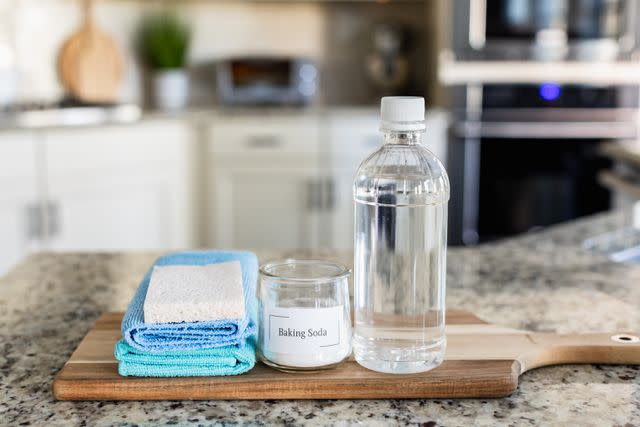
BHG / Ana Cadena
How to Clean the Kitchen with Vinegar
Refrigerator: To properly clean your fridge, consider skipping the toxic chemicals where you store your food. Instead, try distilled white vinegar cleaning on refrigerator surfaces. Wipe up spills using a cloth dampened with a vinegar cleaning solution of equal parts vinegar and water.
Drain: Pour vinegar onto a scrub brush small enough to get inside the disposal. Sprinkle the brush with baking soda, then scrub to remove odors and built-up grime, suggests Mary Findley of GoClean.com, a former pro cleaner and author of The Complete Idiot's Guide to Green Cleaning ($8, Barnes and Noble).
Countertops: Cleaning kitchen countertops with white vinegar is simple: Just spray vinegar onto the surface and wipe it away with a warm, wet rag. However, you should avoid cleaning countertops with vinegar if you have a granite or marble surface.
Cutting boards: Try white vinegar to clean cutting boards. Spray the surface with straight vinegar, then rinse to clean.
Microwave: Cleaning with vinegar isn't limited to countertops. Remove hard-to-clean microwave splatters and stains by placing 1/2 cup vinegar and 1/2 cup water in a glass bowl. Microwave for two to three minutes, or until it boils, then easily wipe away the buildup.
Stained plastic containers: Coat plastic containers in vinegar, let sit for a few minutes, then wash as usual, says Leslie Reichert of Green Cleaning Coach.
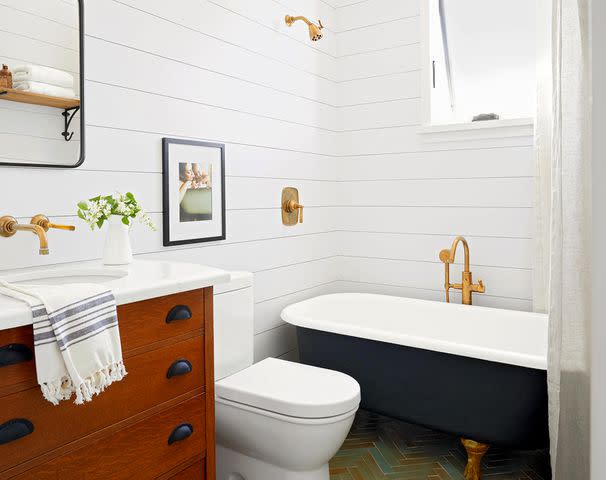
How to Clean Your Bathroom with Vinegar
White vinegar makes quick work of cleaning bathroom surfaces. Try our top uses for distilled white vinegar cleaning, including tile surfaces.
General bathroom cleaning: Use straight vinegar or a diluted vinegar solution to scrub away bacteria, especially around the toilet, where it can curb urine stains and odor.
Toilet: Cleaning with vinegar and baking soda in the bathroom can work wonders. To clean a toilet with vinegar, pour a cup of vinegar in the bowl and let sit overnight. (For tough jobs, empty the toilet water first.) The following day, sprinkle with baking soda or borax powder, scrub, and then flush.
Tub or sink drain: To clean the area around your bathroom drain, pour 1/2 cup distilled white vinegar around the closed drain and let sit for several hours. Scrub to remove buildup. Drain, then rinse.
Shower: To clean your shower with vinegar, try Findley's shower deep-clean regimen. Bring vinegar to a boil, then carefully use the warm vinegar to wipe down the shower door and walls. Keep them damp by wiping them down every five to eight minutes for 30 minutes. Then, dampen a non-scratch sponge with vinegar, sprinkle with baking soda, and scrub. Rinse to wash away germs, mold, water spots, and soap scum.
Showerhead: Cleaning a showerhead with vinegar is easy. Pour some white vinegar into a plastic bag, and secure it to your showerhead with a twist-tie or rubber band. Make sure there's enough vinegar to submerge the bottom part of the showerhead. Leave the bag on overnight. Remove the following day just before showering.
Tile surfaces: To clean tile bathroom surfaces with vinegar, mix 1/2 cup white distilled vinegar with a gallon of warm water. Mop bathroom floors or scrub countertops with the solution and allow to air dry.
Warning
Be careful when mixing store-bought household cleaners and homemade solutions, including vinegar, as fumes and gases can become toxic and lead to harmful secondary effects. Never mix vinegar with bleach.
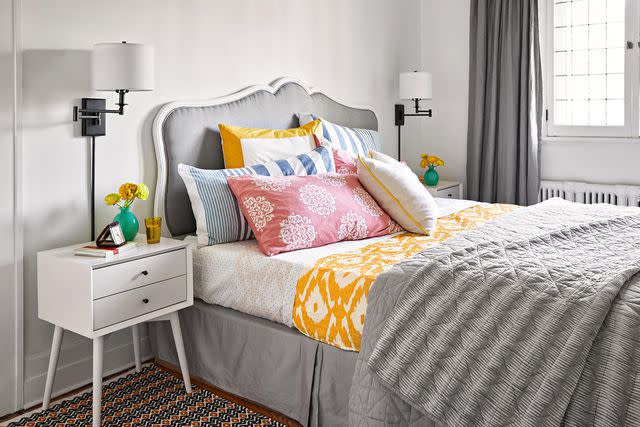
Clean Your Bedroom with Vinegar
Mattress disinfectant: Mix distilled white vinegar, a little rubbing alcohol, and some tea tree oil in a spray bottle. Lightly spritz on your mattress to help combat dust mites, mildew, and general odors. For a deeper clean, follow with a dusting of baking soda. Let dry, then vacuum the mattress surface.
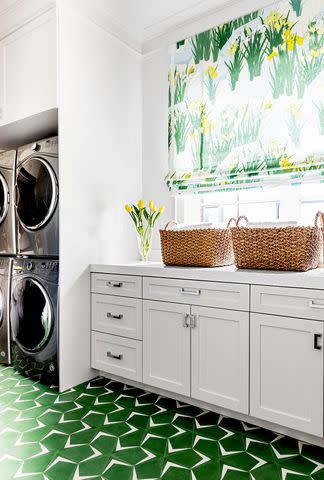
How to Do Laundry with Vinegar
White vinegar uses extend to fabrics and textiles, too.
Detergent booster: Using vinegar in your laundry can help protect colors and remove excess detergent residue. To set colors and reduce fading, wash towels and clothing with about half the recommended amount of detergent plus 1/2 to one cup of white vinegar.
Fabric softener: Use vinegar instead of fabric softeners in laundry, Findley suggests. "It softens clothes and removes the static at a fraction of the cost of fabric softeners," she says. "Just add a cup to the final wash or rinse water."
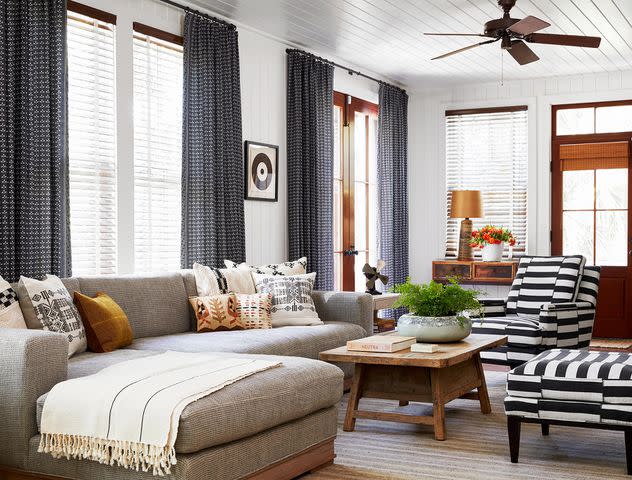
Clean Your Living Room and Dining Room with Vinegar
Glass: Clean with a 50-50 vinegar-water solution to keep glass tables or cabinet doors sparkling.
Wood furniture: Use 1/4 cup white vinegar mixed with one cup olive oil (plus a few drops of lemon or orange oil, if you wish) to clean and condition wood furniture, Reichert says.
Area rugs: Try a vinegar cleaning solution to remove carpet stains and clean area rugs. Mix one teaspoon of mild dishwashing liquid and 1/4 teaspoon of white vinegar with one quart warm water. Apply it to the carpet stain and let sit for 10 minutes before blotting away.
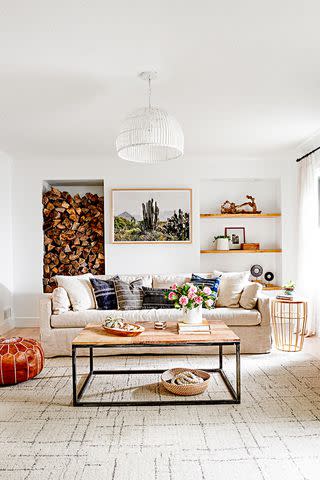
How to Clean Floors with Vinegar
Cleaning floors with vinegar is a natural, chemical-free way to remove dirt and grime.
Carpet odor and dust mite remover: Mix a few drops of your favorite essential oil with distilled white vinegar in a spray bottle. Spritz lightly throughout. (Test in an inconspicuous spot first for colorfastness.)
Carpet rinse: After shampooing your carpet, rinse it using 1/2 cup vinegar per gallon of water. This lifts dirt-attracting soap residue, so carpets stay cleaner for longer.
Carpet pet odor remover: To remove unpleasant pet odors from carpets, wet the spot with vinegar and sprinkle with baking soda. Work the two together with a brush or your fingers. Let dry (ideally overnight), then vacuum.
Wood floor wash: Add 1/2 cup vinegar to a gallon of water to clean wood and laminated floors.
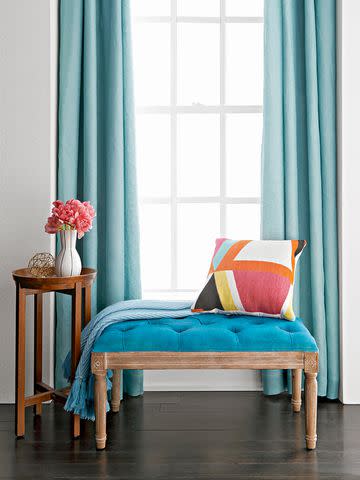
How to Clean Everyday Objects with Vinegar
Make your own homemade cleaning products on the cheap with vinegar and other natural products. Cleaning with white distilled vinegar is both affordable and green.
Air freshener: Skip the chemicals with a natural air freshener. Add 1/2 teaspoon of vinegar to a 4-ounce spray bottle, then fill with distilled water, plus a few drops of your favorite essential oil, if desired.
Window cleaner: Mix 1/4 cup rubbing alcohol and 1/3 cup vinegar in a 32-ounce spray bottle, then fill with water. Lightly spritz on a lint-free cloth to clean.
All-purpose cleaner: Mix one cup vinegar, two teaspoons of borax, four cups hot water, five drops liquid dish soap, 10 drops tea tree oil, and 10 drops your favorite essential oil (optional).
Disinfectant: Use a 50-50 vinegar-water mix to wipe down phones, doorknobs, faucet handles, and more when cold and flu season hits, Findley says.
Frequently Asked Questions
How can I clean with vinegar and avoid the smell?
To mask any lingering smell when cleaning with vinegar, add a few drops of essential oil (like peppermint, eucalyptus, or lemon) to your vinegar and water dilution and shake well before using. You can also infuse vinegar with herbs, citrus peel, and spices to make it more pleasant-smelling. Just fill a container with citrus peel, sprigs of rosemary, lavender, cinnamon sticks, cloves, or other such favorites. Add white distilled vinegar and allow the mixture to infuse for several days before straining it into a spray bottle for use.
Can vinegar damage any materials?
Full-strength vinegar can cause pitting on stainless steel, so we don’t recommend using it undiluted (or repeatedly) on kitchen knives. Skip the vinegar when cleaning marble, granite, and other stone countertops because it can damage the surface and leave them looking dull or scratched (the same goes for stone floors). It’s also a good idea to avoid using vinegar on electronic screens (like computers, smartphones, and televisions) because it can break down the device’s protective coating and make touch screens less effective.
How long does vinegar need to sit on a surface to be effective?
To disinfect a surface, vinegar needs a set time of as long as 30 minutes, but even under the best of circumstances, vinegar is not as effective of a disinfectant as bleach or alcohol. While the acetic acid in vinegar will destroy some bacteria and viruses, it’s best used as a simple cleaner to remove dirt, debris, and grime from surfaces.
For more Better Homes & Gardens news, make sure to sign up for our newsletter!
Read the original article on Better Homes & Gardens.

